The black-footed cat, sometimes called the small-spotted cat, is the smallest wild cat in South Africa. In some parts, the cat is also called the “anthill tiger” due to its fierce nature when cornered.
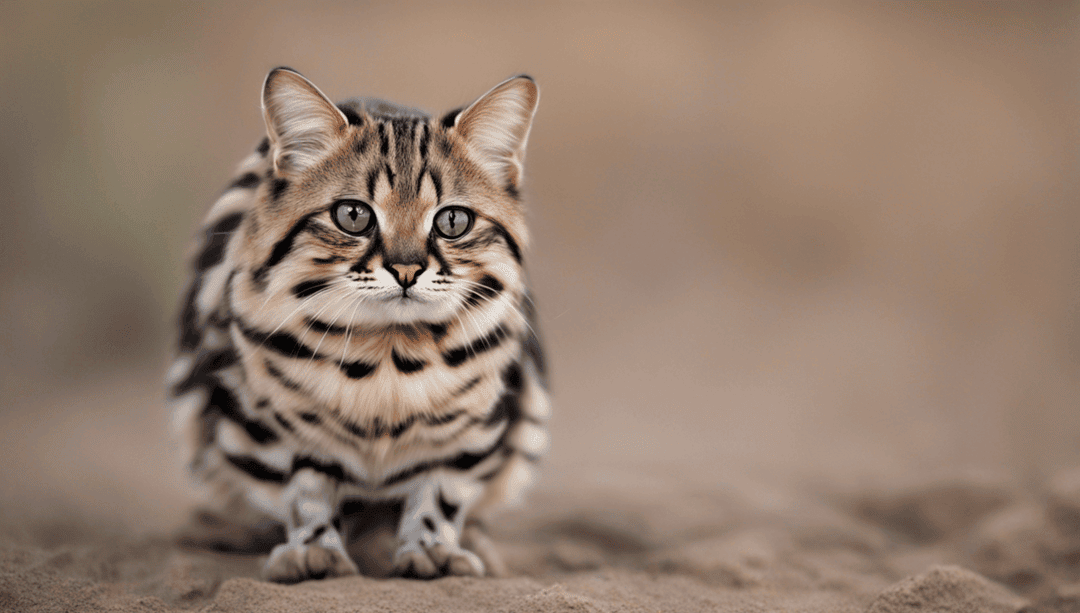
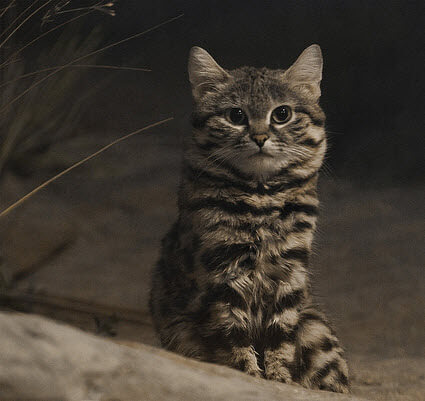
Scientific Name: Felis nigripes
Conservation Status: Vulnerable, population is declining. Black-footed cats in the wild have been estimated at less than 14,000.
Subspecies: No
Lineage: The black-footed cat belongs to the Domestic Cat lineage, which includes the Jungle cat, African wildcat, sand cat, Chinese mountain cat, European wildcat and domestic cat.
Interesting black-footed cat facts
- Considered a rare small wild cat.
- Only the soles of the black-footed cat are actually black.
- They have hair on the soles of their feet that protect them from the hot sand.
- The black-footed cat was first discovered and described in 1824.
- It feeds on 40 different animals and can kill up to 14 animals a night.
- It can consume as many as 3,000 rodents a year.
- It can jump up to 5 ft. usually to catch birds
- The cat first emerged in Asia around 8 to 14 million years ago.
- It separated from the common ancestor of all Felis species around 2 to 4 million years ago.
- It is likely the cat migrated from Asia to Africa during the Pleistocene era when sea levels between the two continents were low.
- During the day, they shelter in abandoned termite mounds, which is why they are known as “anthill tiger.”
More about the black-footed cat
Black-footed cats spend most of the day resting where they can’t be seen and come out at night to hunt.
 Physical appearance
Physical appearance
The black-footed cat gets its name from the black coloring on the bottom of its feet. The cat has large eyes, and its fur color can range from reddish-brown to beige, with black and brown spots. Sometimes, the spots will merge into ring-looking shapes. The head is considered similar in appearance to a domestic cat. Male cats weigh between 4.2 and 5.4 lbs. Females can weigh as little as 2.9 lbs. The cat has a stocky appearance with rounded ears. Its tail is relatively short, with a black tip.
Territory
Black-footed cats live in various regions in southern Africa, including Zimbabwe, Namibia, and parts of Angola. You will find most black-footed cats in dry areas, including grassy, sandy plains, and deserts with scrub. Some cats have also been found at elevations up to 6,600 ft. The cat will dig or climb into existing burrows for shelter or resting during the day. They will live in the same area with other carnivores like foxes, jackals and the African wildcat.
Hunting and prey
The black-footed cat only hunts at night. It will begin hunting after the sun goes down until sunrise. Its prey includes small animals such as rodents, small birds, insects, and spiders. The cat will stalk its prey and chase it out in the open. They will climb trees looking for bird’s nests, but most of their prey is on the ground. A unique characteristic of the black-footed cat (compared to other smaller wild cats) is that it sometimes hides its prey to eat later.
Mating and Reproduction
Black-footed cats usually live alone, but they come together during mating season. This can happen any time of year, but it mostly takes place in the spring and summer.
When a female is ready to mate, she leaves a special scent to attract males. If a male finds her, he may follow her for a short time before they mate.
After mating, the male leaves, and the female takes care of everything on her own.
After about 63 to 68 days, she gives birth to 1 to 3 tiny cubs in a safe, hidden spot like a burrow or hollow log.
The cubs are born with their eyes closed and depend completely on their mother. She feeds them milk and protects them until they are strong enough to hunt on their own, usually around 4 to 6 months old.
Black-Footed Cat Development Stages
| Stage | Age Range | Description |
|---|---|---|
| Newborn Cub | 0 – 2 weeks | Eyes closed, very small (about 3 ounces). Relies fully on mother for warmth and milk. |
| Infant Cub | 2 – 6 weeks | Eyes open, begins crawling and exploring the den. Starts to show curiosity. |
| Young Cub | 6 – 12 weeks | Begins walking more steadily, may start eating small pieces of meat. |
| Juvenile | 3 – 6 months | Active and playful. Practices hunting skills. Begins leaving den more often. |
| Subadult | 6 – 12 months | Hunts on its own but may still stay near mother. Grows rapidly in size. |
| Adult | 1+ year | Fully independent. Hunts mostly at night. Defends its own territory. |
Black-footed Cat Conservation
Critical threats include poisoning from pest control methods, the impact of agriculture, livestock farming and ranching, roads and railroads, hunting and trapping, weather changes, a declining prey population, and disease. Domestic dogs, owls, jackals, caracals, and snakes also attack and kill cats.
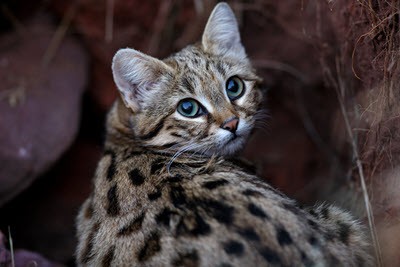
Black-footed cat research and quotes
2023 The genome of the black-footed cat: Revealing a rich natural history and urgent conservation priorities for small felids | Yuan, Kitchener et al. “The black-footed cat, Felis nigripes, one of the smallest felid species, is experiencing increasing threats with a rapid reduction in population size.”

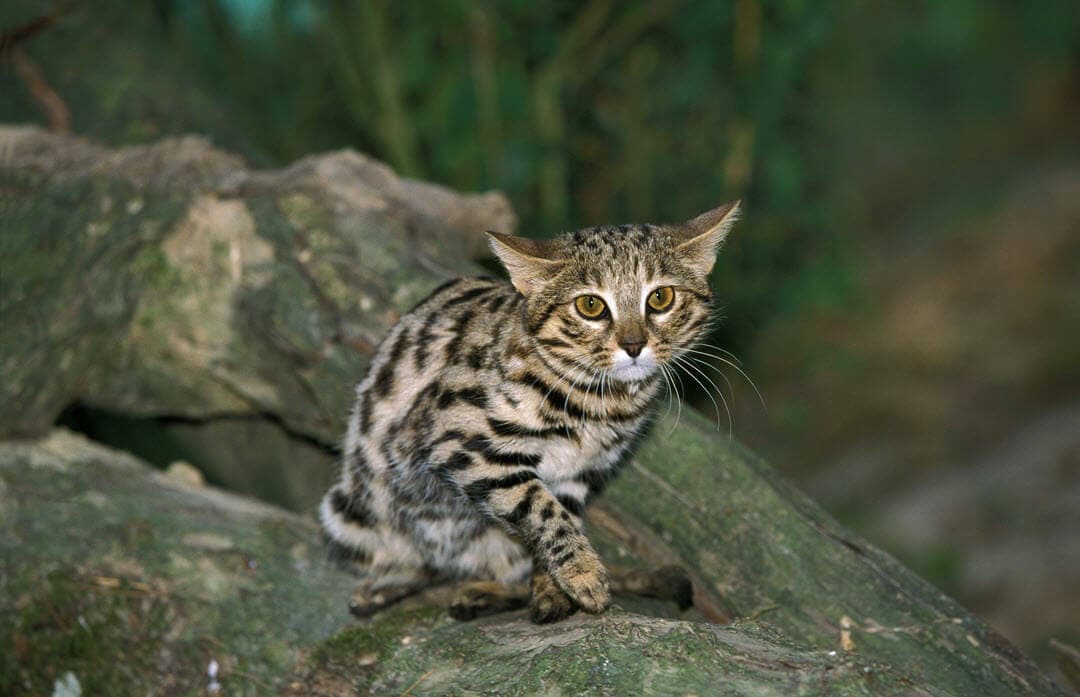
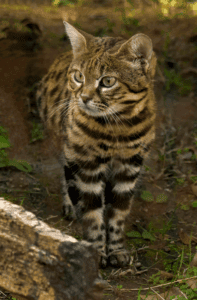 Physical appearance
Physical appearance

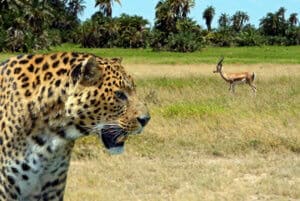








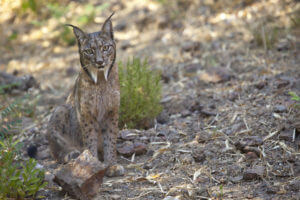




0 Comments